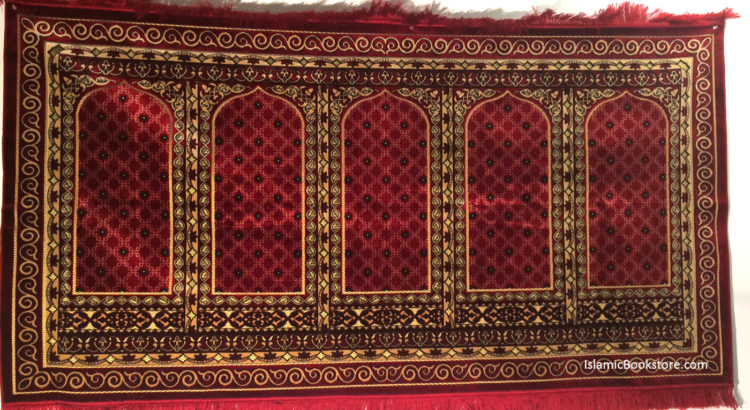 “The carpet is very beautiful,” the Chinese shopkeeper at the dry cleaning kept saying as he handed me back the prayer rug. “It is,” I said as I thought to myself yeah it is pretty.
“The carpet is very beautiful,” the Chinese shopkeeper at the dry cleaning kept saying as he handed me back the prayer rug. “It is,” I said as I thought to myself yeah it is pretty.
The prayer rug is a piece of cloth, sometimes a carpet that a Muslim places between the ground and themselves so that they can remain clean when performing a prayer.
When the shopkeeper mentioned the comment, then only did I realize that this piece of cloth I’ve been keeping around and praying five times a day on, is a piece of art. Its vibrant colors, geometric and symmetrical designs and soft texture combine to create a peaceful praying experience. I recall admiring and tracing the designs with my eyes as a teenager during long periods of prayer (admittedly, not focusing on the prayer). The beautiful ones always struck out to me, woven with complementing colors and aesthetically pleasing patterns.
One feature of prayer rugs is that it never features animals or living things on it. This is because of aniconism. Aniconism is the avoidance of images of sentient beings in Islamic art. Sentient beings include animals and human beings. This is interpreted from a belief Muslims hold that creation of living creations can only come from God as well as a prohibition of idolatry. Thus over the centuries, religious art has always excluded any use of human figures or animals. Therefore, Muslims artists turn to abstract floral patterns, geometry and calligraphy for inspiration. 
Another feature that is sometimes seen in prayer rugs is that either the Kaaba or a mosque can be seen. Kaaba is the shrine in the most important mosque for Muslims and Muslims direct their prayers towards the Kaaba. The Kaaba is associated with various prophets, especially Prophet Muhammad (peace be upon him).
When using a prayer rug, one is also suppose to orient the rug towards the direction of the Kaaba using the right side of the rug. In the first picture, the side of the mosque should be in the direction of the Kaaba, not the other way around. Prayer rugs also come in many colors and designs, from green hues to pretty pastels, making it impossible to choose just a boring one when you could get a prettier one (although more expensive).
Some prayer rugs tell stories too. Certain older designs from centuries back reflect patterns distinctive to certain tribes. Some prayer rugs are valuable depending on when it was produced, sometimes costing up to $300. Certain prayer rugs are displayed, deemed too precious to pray on.
In the end, this mundane everyday object is what made me think hm this too is art.



(Picture credits: Google Images)



Leave a Reply
1 Comment on "Art in the Form of a Prayer Rug"
when ever i used to see any piece of ART, the only thing comes into my mind is “I will be an artist or nothing” . Art is the only way to describe any culture and their way of living. Muslims praying rugs also describe the beauty of Art and culture. An amazing article.